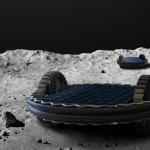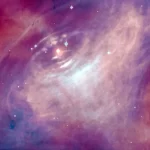Key Takeaways:
- Scientists remain puzzled by gravitational waves discovered in 2023, with ongoing efforts to identify their source.
- The North American Nanohertz Observatory for Gravitational Waves (NANOGrav) suspects merging supermassive black holes, but alternative cosmological sources are also under consideration.
- Potential cosmological origins include “cosmic strings,” “phase transitions,” and “domain walls,” offering insights into early universe processes.
- If the detected signal is from domain walls, it could provide a unique glimpse into the universe’s beginnings and aid in the search for dark matter and dark energy.
- Future space experiments, such as the Laser Interferometer Space Antenna (LISA) and the Atomic Experiment for Dark Matter and Gravity Exploration (AEDGE), aim to improve gravitational wave detection capabilities.
In the quest to unravel the mysteries of the cosmos, scientists are still grappling with the enigma surrounding gravitational waves detected in 2023. The North American Nanohertz Observatory for Gravitational Waves (NANOGrav) has been at the forefront of this investigation, with initial suspicions pointing towards merging supermassive black holes, known as binary pairs, each a billion times more massive than our sun. However, recent research suggests that the gravitational wave signal may have a more complex origin, raising questions about its true nature.
While the binary black hole hypothesis remains a strong contender, additional cosmological sources are being explored. Exotic processes such as “cosmic strings,” “phase transitions,” and “domain walls” are now under consideration, presenting a broader spectrum of potential origins for the detected spacetime ripples. These processes, believed to have occurred in the early universe, offer a unique opportunity to understand the cosmic evolution that shaped our present-day cosmos.
Of particular interest is the possibility that the detected signal may emanate from domain walls, intricate structures proposed over half a century ago to explain the asymmetry between matter and antimatter in the universe. The detection of gravitational waves from domain walls could provide unprecedented insights into the fundamental processes that occurred shortly after the Big Bang.
Moreover, the study suggests that the cosmological processes behind the spacetime ripples may contribute to the ongoing quest for dark matter and dark energy. As domain walls move and evolve, emitting gravitational waves, they may eventually decay, giving rise to “clumps” of dark matter. This intricate connection between spacetime ripples and the elusive components of the universe adds an intriguing layer to the ongoing astronomical investigation.
Despite the tantalizing possibilities, deciphering the signals from different sources poses a significant challenge. The limitations of current telescopes, such as the Laser Interferometer Gravitational-Wave Observatory (LIGO), necessitate the development of advanced detectors. The upcoming Laser Interferometer Space Antenna (LISA), launching in 2037, aims to address this gap by focusing on low-frequency waves, complementing the capabilities of existing detectors.
Another proposed space experiment, the Atomic Experiment for Dark Matter and Gravity Exploration (AEDGE), holds promise in exploring gravitational waves in frequencies between those detectable by LISA and LIGO. However, for these future detectors to fulfill their potential, precise predictions and data interpretation strategies are essential, emphasizing the collaborative effort within the scientific community.
In conclusion, the pursuit of understanding the spacetime ripples detected in 2023 continues to unfold as astronomers delve into the complexities of cosmological processes and potential sources. The convergence of theoretical exploration and technological advancements promises a deeper comprehension of the universe’s intricacies in the years to come.


